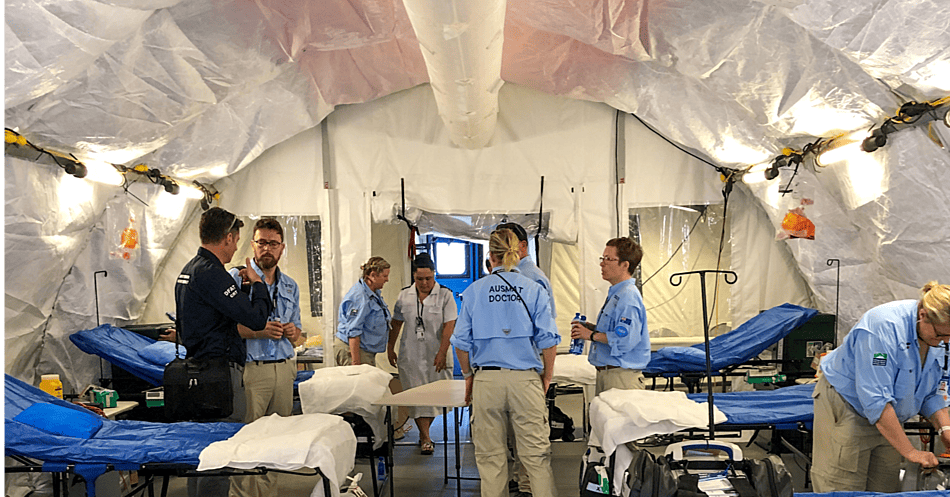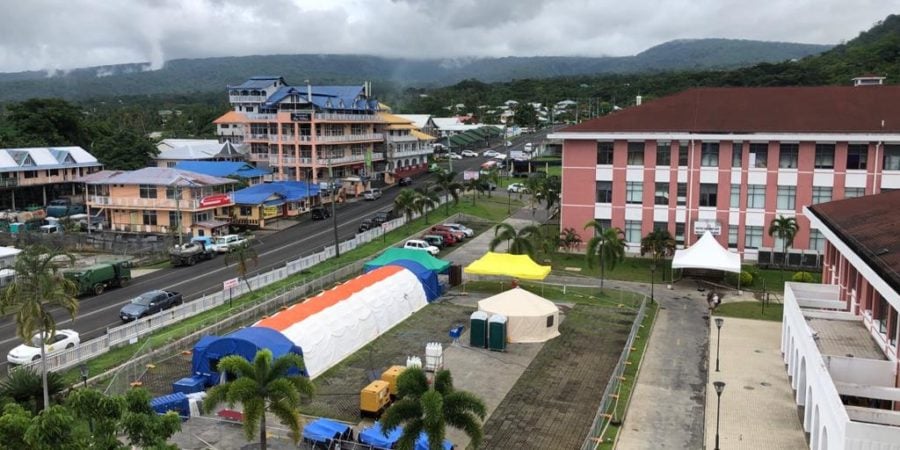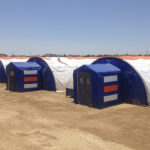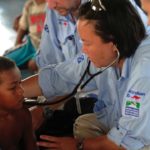Negative Pressure Isolation Facility Takes Pressure Off Strained Samoan Hospital System in Its Time of Need
Photo courtesy of Misiona Simo.
On the heels of declaring a measles epidemic in mid-October, Dr. Take Naseri, the Director-General of Health for Samoa’s Ministry of Health, officially declared a state of emergency for the measles outbreak on Friday, November 15. The outbreak has so far claimed the lives of 76 individuals, more than 60 children under four years old.
With a population of less than 200,000, the Pacific nation of Samoa was not adequately prepared to isolate and treat a measles outbreak of this scale.
Globally, health care professionals have been fighting an upswing of measles cases due to declining or stagnant vaccination rates among populations. In 2018, there were 10 million cases of measles and 142,000 deaths worldwide. As 2019 is coming to an end, the number of measles cases is expected to be three times greater.
Measles is a highly contagious infectious disease caused by the measles virus. It is quickly spread from breathing, coughing, or sneezing around an infected person. Symptoms usually appear 10-14 days and include a cough, runny nose, inflamed eyes, sore throat, fever (often greater than 104˚F), and a red, blotchy skin rash.
In the case of the measles outbreak in Samoa, a series of unfortunate events created ideal conditions for the virus to quickly spread. An error by two nurses administering an MMR vaccine mixed with a muscle relaxant solution (instead of water) lead to the accidental deaths of two infants and caused widespread mistrust against the government and vaccines. The Samoan government reacted by suspending its vaccination program for 10 months. Additionally, “anti-vaxxers” were quick to point and spread the message against vaccinating. According to the World Health Organization (WHO), only 31% of Samoa born infants were vaccinated in 2018. When a likely traveler from New Zealand arrived, which has been dealing with a measles outbreak over the last year, the virus was introduced to a largely unprotected population. Samoans who became ill flocked to the hospitals and clinics to be treated and vaccinated. In doing so, they unknowingly spread it to others that were also gathering to be vaccinated or at the hospital seeking other care.

Photo courtesy of the Australian Department of Foreign Affairs and Trade.
Since the measles virus can linger in the air for up to two hours, it’s necessary to isolate and contain the sick. Under normal circumstances, airborne disease containment is done by using hospitals with negative pressure I.C.U. capabilities. However, with only eight hospitals and a finite number of I.C.U. beds and primary care physicians working on their off-time with relief work, there was no way for the Samoan health care system to adequately isolate and care for all the sick.
Thankfully, the state of emergency allowed the 34-person Australian Medical Assistance Team (AUSMAT) to spring into action. Authorized by the Australian Minister of Health, AUSMAT was able to fly in to provide “urgent care to critically ill patients, support vaccinations and develop public health messages.” AUSMAT is one of eight World Health Organization-verified teams with Type-2 E.M.T capabilities. This meant having a well-trained team with the flexibility to work in any environment.
To relieve the stress of Samoa’s health care system, the team brought a rapidly deployable medical shelter with negative pressure isolation capability from BLU-MED Response Systems®. Designed specifically for quick transport and modular setup, the Negative Pressure Isolation System (NPIS) was set up and operating within a single day. Equipped with HEPA and UV germicidal filtration air scrubbers, the AUSMAT is able to help care and isolate the people of Samoa from the highly infectious measles virus.
Following a massive vaccination campaign, the immunization rate in Samoa is now 93%. As of December 18, 2019 – the Ministry of Health reported 5,371 measles cases, with 40 new cases recorded in the last 24 hours. To date, there have been 1,723 patients treated at hospitals and medical facilities.
Tonga, Fiji, and American Samoa are also currently responding to measles cases.
===
Whether it’s disaster relief or humanitarian assistance, time is of the essence. In a highly connected, globalized community, it’s more important than ever to have the right teams ready to respond and be on the ground in a short period of time. In a recent study by the U.S. Army Pacific’s Medical Operations and Planning Office, they found that medical relief needs to be delivered and operational in at least 72 hours. The “Going in Light” method helps trained professionals adapt to any situation in order to stabilize acute trauma issues and triage the remainder of the afflicted. BLU-MED medical shelters and mobile hospitals offer an unmatched level of scalability to address disasters of any size, are easily shipped in low-cube packaging for multimodal transportation, are designed to provide modular healthcare facilities quickly.
BLU-MED Response Systems® (BLU-MED) was formed in 2004 as a division of Alaska Defense™ – the military division of AKS Industries, Inc.
Alaska Structures (AKS) is an industry leader in designing camp; engineering fabric building systems for extreme climates. Our shelters have undergone extensive tests and have been deployed in over 85 countries with more than 28,000 Alaska Military Shelters being installed worldwide.
For more information about BLU-MED or Alaska Structures call a representative at +1-888-680-7181 or 425-739-2795.
Email: inforeq@blu-med.com
Web: www.BLU-MED.com


